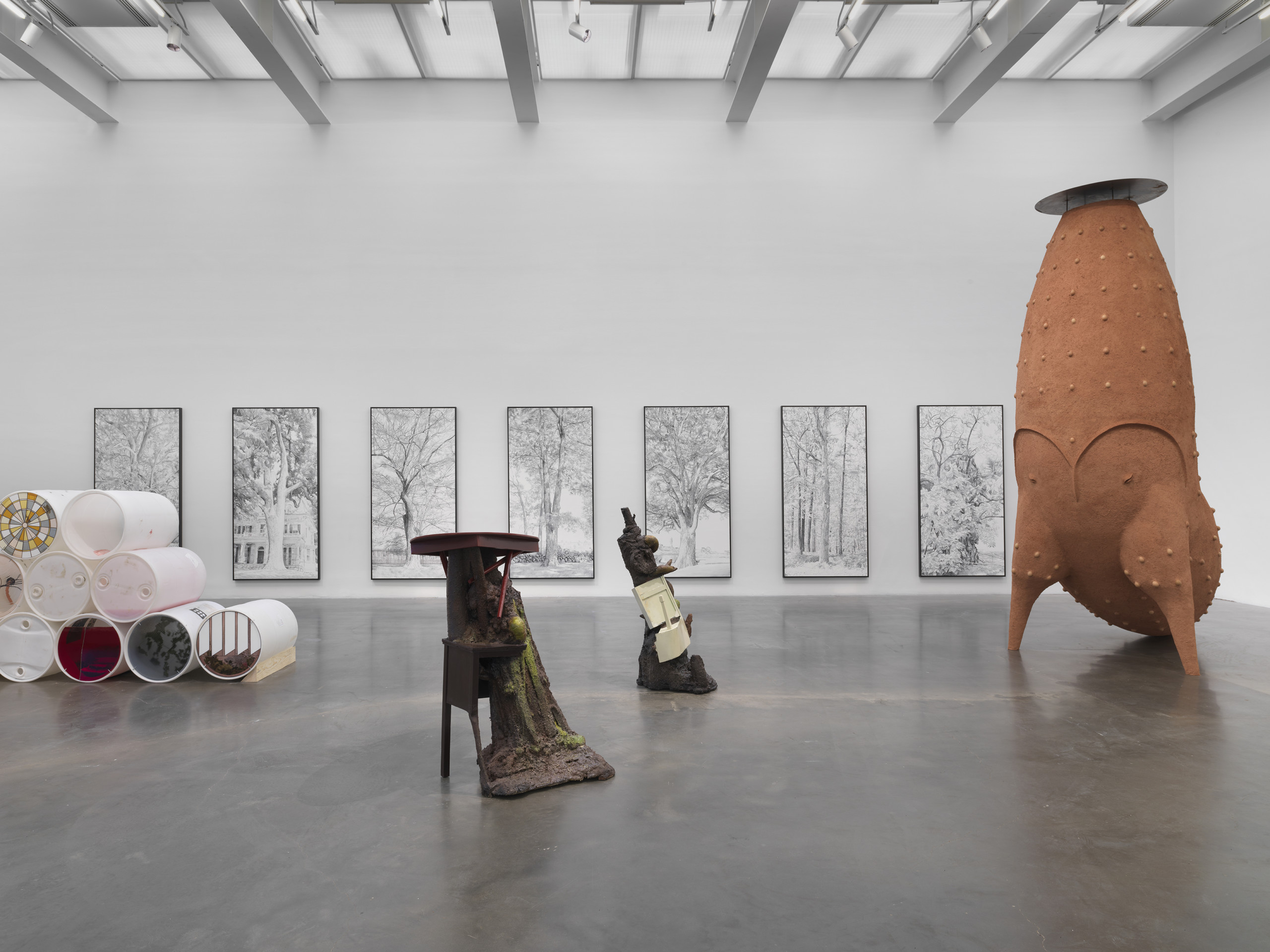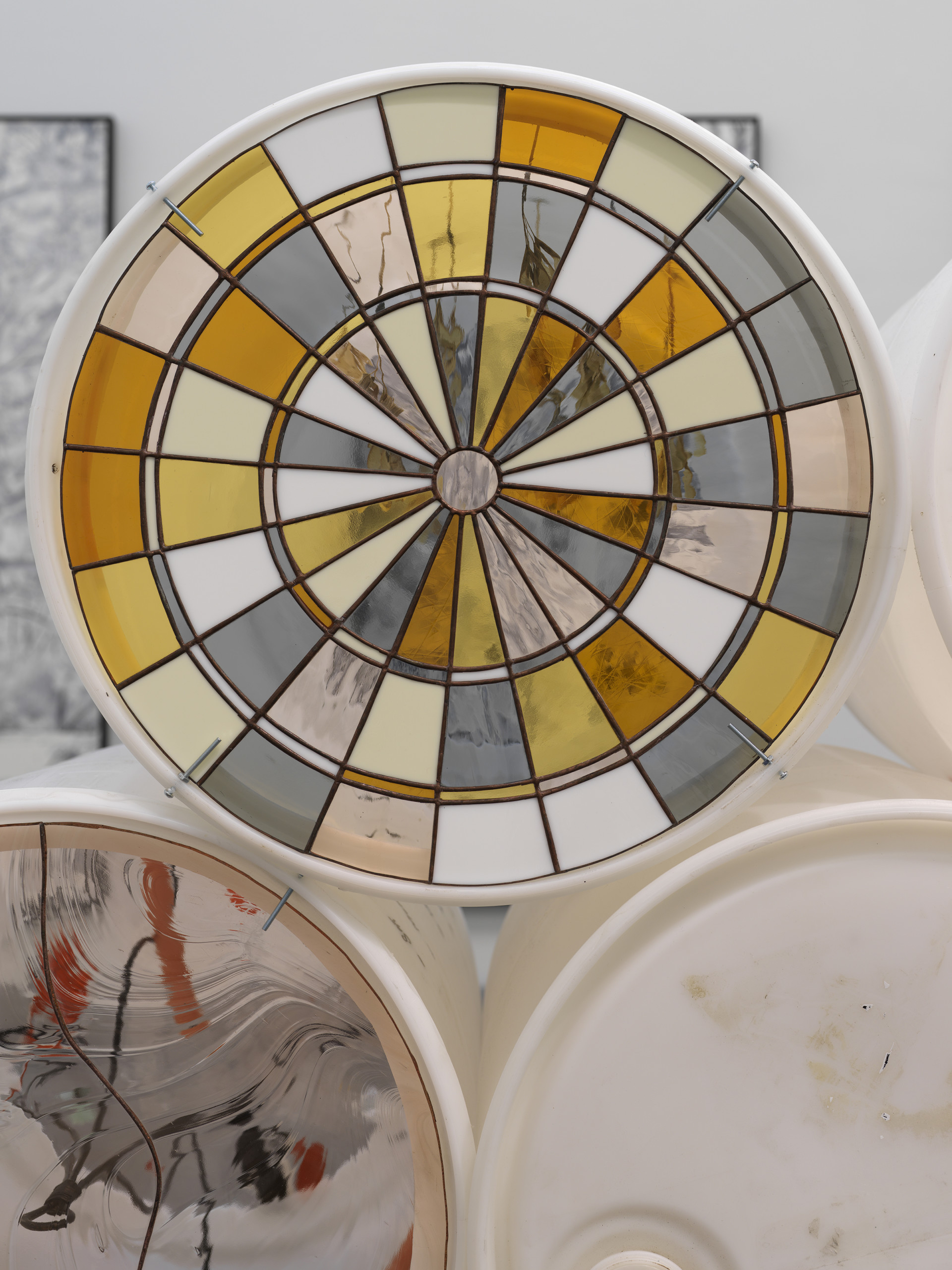
The New Museum’s 2021 Triennial is a coy, searching show. It seeps and creeps. It hints at modes of being, existing and making that defy human timescales. As the art institution’s last two triennials organized themselves around some metaphor of resistance—“The Ungovernables” (2012), “Songs for Sabotage” (2018)—so too does this year’s “Soft Water, Hard Stone,” which is taken from a Brazilian proverb (a version of which also exists in Chinese) about water eroding stone as a model for slow, quiet change. However, this edition feels distinctly less anthropocentric; it’s not so confident that human knowledge will be the way out, turning instead to the natural world. This is less the language of now, and more of always, already.
Jeneen Frei Njootli’s Fighting for the Title Not to Be Pending (2020) scatters the artist’s body weight in shimmery beads across the entire museum, including the sidewalk outside and in nooks across all three floors. Whenever you encounter it, it makes you feel as if the museum were bleeding, or of a large, ailing body, like the sculptures in Amy Lien and Enzo Camacho’s lobby gallery installation waves move bile (2020). A soundtrack makes the duo's works breathe and cough; all too poignant as I adjusted my face mask in the show. These five luminous heads by Lien and Camacho recall Buddhist statuary, trailing down into glowing orbs resembling human organs (lungs, entrails, genitalia) that float in midair.

The image reminds me of ghosts, of which there are a lot in this exhibition. Arturo Kameya’s installation Who can afford to feed more ghosts (2021), also in the lobby gallery, is theatrical, but with charmingly little action. It contains a dinner table, low to the ground; small cups that appear to move on their own; a fish that flops in the corner; two figures stretching, and a frothing, deconstructed dog sculpture. Who are the ghosts here? Maybe we’re the visitors from a different plane. There are ghosts in objects too, in the things we can’t seem to rid ourselves of, like in the psychic readings of rings found by an Atlantic City metal detector enthusiast in Rose Salane’s work, 60 Rings.
Some of the galleries feel too crowded; in particular the elevator gallery of the third floor, which constellates many disparate, collapsed bodies—Ambera Wellman’s impressive, warped 30-foot painting, Yu Ji’s curled concrete casts, Sandra Mujinga’s avatar that hides from the burden of representation and Clara Ianni’s analytical drawings of the commutes of various New Museum workers (although salary information is notably missing). Such dense, disparate pairings ask for a bit more breathing room.

The show’s artists also seem like wanderers of capitalist ruins, foraging for beauty, alternatives and paths forward. 1000 Anos (2019) by Tomas Diaz Cedeno shows concrete stalactites that have an irrigation system whose soft water will slowly bore the sculptures down. Iris Touliatou’s minimalist painting series, “Untitled (Still Not Over You)” (2021), were made from found fluorescent bulbs that had been discarded from factories and offices around Athens, injecting politics into a Dan Flavin-like transcendence. It felt a bit contradictory, to see such ruins polished up in the gallery, like relics in tuxedos.
Many of the artists in the show have built their own institutions in the wake of these ruins. Haig Aivazian is the artistic director of the Beirut Art Center; Thao Nguyen Phan is the cofounder of Art Labor in Ho Chi Minh City among many others, as Karen Archey notes in the catalogue. What would it have meant to see those institutions represented in some capacity within the space of the exhibition? To have that institutional work made precious in the same way that the art objects were might have helped the curator’s thesis by giving a more capacious understanding of soft water and its power: The myriad forms of activity that populate an artist’s day other than object making. If the end of the world is nigh; let there be art, but also its entrails.
Craving more culture? Sign up to receive the Cultured newsletter, a biweekly guide to what’s new and what’s next in art, architecture, design and more.










 in your life?
in your life?

